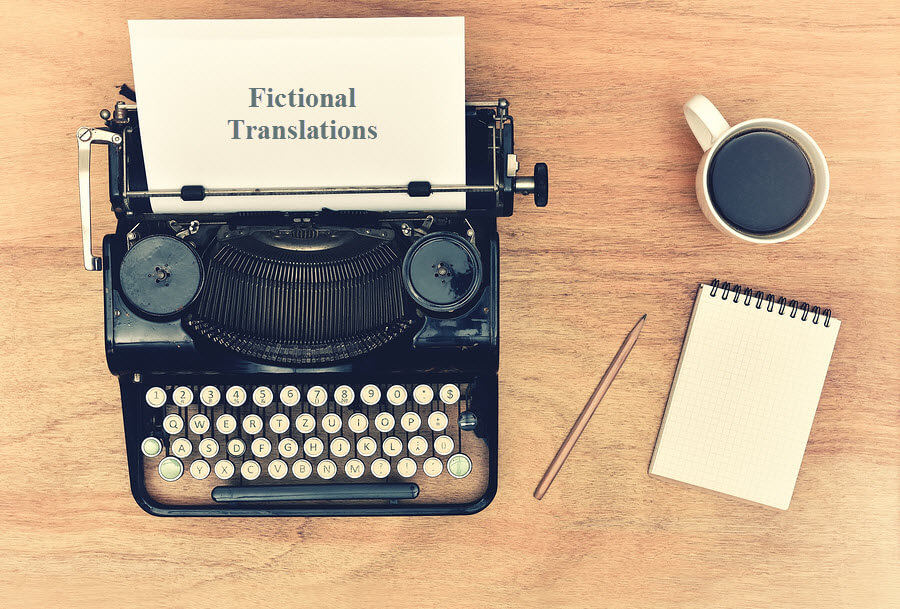About 3 percent of all fiction worldwide ends up being translated into English, according to a survey in the U.S. a decade ago. That might have changed for the better according to recent comments from an organisation called Literature Across Frontiers (LAF), but does the percentage matter and what are the particular challenges of literary translation?
Why Fictional Translation Matters
Literature translation is not new. It has been around since the invention of writing itself. Perhaps the first known literary translations were those of the Bible from the original Hebrew into Greek and Latin and from them into dozens of other languages. Literary translation is the translation of fictional prose and poetry from one language into another. Without it, the world’s population would lose out on the huge diversity and richness of stories and poetry spun and created around the planet. Literary translation is not restricted to modern literature but also encompasses past literature including ancient works of art.
Literary translation provides a glimpse into the thoughts and ideas, as well as the way people live in places other than our own. It provides an opportunity to build an understanding of politics, economic conditions and historical connections and an insight into common human problems.
The Challenges of Literary Translation
Literary translation is very different from the translation of technical manuals and medical experimentation, or even legal and court documents. For a start, it can mean the translation of hundreds of thousands of words, which is no mean feat. Literary translation cannot use the method of word for word literal translation which is so much the preferred practice for technical translation. Much of the literary text that is translated may not be able to be easily converted without a lot of thought and personal input by the translator. The translated version somehow has to capture the power and flavour of the original text yet make it understandable by a different audience. Often, the literary translator must be almost as creative as the original author. In fact, this has been recognised by the changing of the Man Booker International Award in 2016 to give equal recognition to the translator as it does to the original author.
Explaining the Low Literary Translation Publication Figure
The 3% figure represents the estimated percentage of foreign fiction, prose and poetry that ever got published in English in the U.S. after translation. The figure is somewhat dated now, but is probably still relatively low. The equivalent percentage of English literary work into other languages is probably a good deal higher and more so when minor languages are concerned. One of the reasons for the relatively low amount of published fictional translation is that publishers will not touch material unless they think they can make a profit from it. The most money is made by high volume book sales and translated literature generally does not fit into that category, however well it has been translated.
The picture may be changing. The world is certainly becoming smaller and more cosmopolitan. People are probably travelling more away from their own countries than they have ever done and have learned that the way people live elsewhere, their culture and way of life can be fascinating. This can make the creative products of those foreign countries, the art, music, literature, film and dance more attractive. Of all these aspects of culture, literature is the least transferable unless it has been translated. To put it another way, film can be appreciated because it is visual, even if the language is not understood. Music can be appreciated again without understanding the lyrics. Art is a language all of its own and is entirely visual. Literature alone is a mysterious code that cannot be cracked without the translator’s help!
The director of LAF, Alexandra Büchler, reports that the publication of literary translations has grown by about 66% in the last two decades, although that figure may be overshadowed to some extent by the fact that all publications have grown at roughly the same rate anyway.
An encouraging trend in the rapidly expanding epublishing sector, led by Amazon, is the creation of an arm of the company that is expressly devoted to the publication of online literary translation called AmazonCrossing. This route for literary translation publishing now makes up over 10% of all published literary translation.
Conclusion: Fictional Translations in Brief
Literary translation has been around for as long as the existence and appreciation of literature itself. Fictional translation allows all of us the opportunity to appreciate the fictional works of authors and poets around the world. Literary translation is one of the most challenging fields of translation, partly because of the sheer volume of material that must be translated as well as the difficulty in conveying the essence of someone’s thoughts and ideas in another language. Literary translation is not generally a high volume market as far as publishing is concerned although there is a steady growth in publication, especially in the form of online material.




















